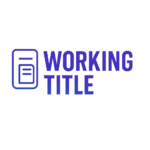Recruitment advertising has undergone a massive transformation over the past decade. Traditional job boards and generic pay-per-click (PPC) campaigns are losing effectiveness, while employer branding and targeted talent outreach have become more critical than ever.
As we move into 2025, the way companies attract and engage talent is evolving fast. With advancements in AI, shifts in job seeker behavior, and the rise of first-party data strategies, recruitment advertising is becoming more precise, data-driven, and personalized.
So what’s next for recruitment advertising in 2025? Here’s what employers, recruiters, and hiring teams need to prepare for.
1. The Death of Generic Job Ads & Rise of Contextual Advertising
For years, companies have relied on job boards and programmatic advertising to distribute postings. The problem? Job seekers are overwhelmed with irrelevant listings, and employers are frustrated with low-quality applicants.
In 2025, context will be king.
Instead of mass job postings, recruitment advertising will:
- Target talent within niche communities rather than broad platforms
- Leverage first-party data to retarget candidates who’ve shown interest in similar roles
- Prioritize trust and engagement by running ads within thought-leadership content pieces, trusted networks, industry newsletters, and career content
Rather than blasting job ads to as many people as possible, the focus will shift to advertising in the right places with the right message.
Example: Instead of running ads on LinkedIn targeting every software engineer, employers will partner with trusted tech recruiters who run private job boards, newsletters, and Slack communities where engaged talent is already looking.
2. AI-Powered Personalization Will Dominate Job Advertising
Job seekers today expect the same level of personalization in their job search that they experience when shopping online. Generic job ads will no longer cut it.
AI-driven recruitment advertising will:
✔ Serve dynamic job recommendations based on past search behavior
✔ Auto-optimize job ads in real-time based on performance data
✔ Personalize job alerts & ad copy for specific audience segments
AI will allow employers to deliver highly targeted, hyper-relevant job ads rather than taking a one-size-fits-all approach.
Example: If a candidate clicks on multiple data analyst job listings but doesn’t apply, AI-powered recruitment advertising will serve them more refined roles, such as “Data Analyst – FinTech Industry” or “Remote Data Analyst with Python Expertise,” increasing conversion rates.
3. First-Party Data Will Replace Third-Party Recruiting Platforms
For years, employers have relied on third-party platforms like Indeed, LinkedIn, and ZipRecruiter to source candidates. But as job boards become oversaturated and more expensive, companies are shifting toward first-party recruitment strategies.
What is first-party recruitment data?
First-party data refers to talent information that a company collects directly rather than renting access from external platforms.
Sources of First-Party Recruitment Data:
- Past applicants in your ATS or CRM
- Job seekers who visited your career site but didn’t apply
- Talent engaged through recruiter-led trusted networks
- Employees who referred potential candidates
- Passive talent who interacted with employer content
Why is first-party data the future?
- Lower cost-per-hire—no bidding against competitors on job boards
- Better applicant quality—engaged candidates already familiar with your brand
- Higher conversion rates—personalized outreach based on past interactions
Example: Instead of paying for anonymous job board applicants, companies will retarget career site visitors with personalized job ads and email outreach—cutting costs and improving applicant quality.
4. Pay-for-Performance & Subscription-Based Recruiting Models Will Grow
Recruitment advertising budgets have long been spent on cost-per-click (CPC) or flat-fee job postings, even when those methods don’t guarantee results.
Future-focused companies will shift toward pay-for-performance and subscription-based hiring models that offer more predictable outcomes.
What’s Changing?
- Performance-Based Job Advertising – Employers will pay only when qualified candidates apply, not for random clicks.
- Recruitment Media Subscriptions – Instead of one-off job posts, companies will subscribe to high-value talent communities for ongoing engagement.
- Hiring Funnel Optimization – Employers will use data-driven strategies to track which job ads lead to actual hires, not just applications.
Example: Instead of paying $500 to post a job on LinkedIn and hoping for results, companies will invest in sponsored placements within recruiter-owned talent communities, paying only for quality applicants.
5. The Expansion of Employer Branding in Paid Media
Recruitment advertising isn’t just about job postings anymore. Employer branding is becoming a critical part of paid media strategies.
How companies will integrate employer branding into recruitment advertising:
✔ Video ads featuring employee testimonials rather than static job descriptions
✔ Employer-sponsored podcasts & thought leadership content
✔ Behind-the-scenes content on company culture & hiring initiatives
✔ Micro-influencers & recruiter advocates promoting jobs within niche networks
Candidates don’t just apply to jobs—they research the company, its leadership, and its work culture before making a decision. Recruitment ads that showcase employer brand storytelling will outperform generic job posts.
Example: A company hiring for cybersecurity roles may sponsor a cybersecurity-focused career newsletter, featuring both job ads and content on company culture, benefits, and career growth opportunities.
Final Thoughts: What Recruiters & Employers Should Do Now
The recruitment advertising landscape is evolving rapidly. Companies that adapt will attract top talent more effectively, while those stuck in outdated models will struggle.
🔹 Stop relying on generic job boards. Invest in recruiter-led networks and niche talent communities.
🔹 Leverage AI & automation to serve smarter, more relevant job ads.
🔹 Own your hiring data. Build first-party talent pipelines instead of renting candidates from third-party platforms.
🔹 Use a mix of job ads & employer branding to stand out in a competitive market.
By embracing these trends now, employers will position themselves for success in 2025 and beyond.
Recruitment advertising is changing—will your hiring strategy keep up?

Want more insights? Join Working Title - our career elevating newsletter and get the future of work delivered weekly.